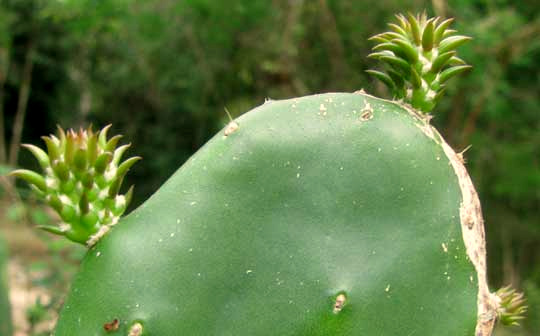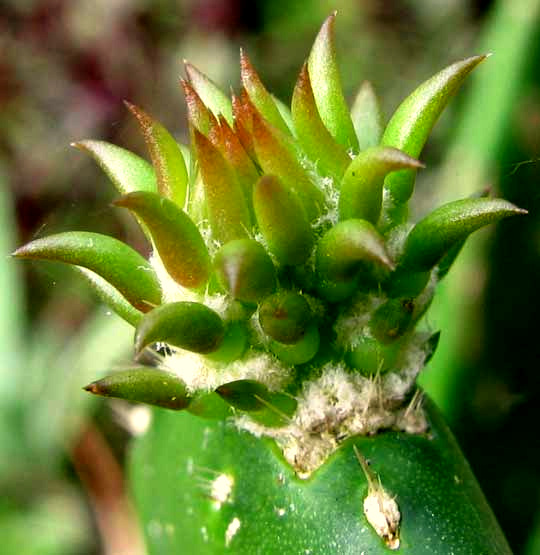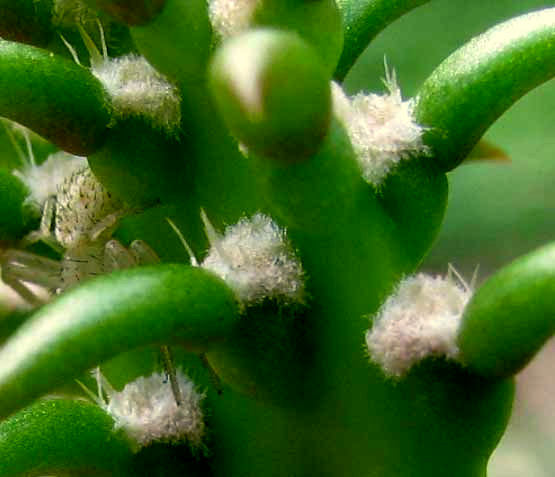Excerpts from Jim Conrad's
Naturalist Newsletter
from the January 1, 2012 Newsletter issued from Hacienda Chichen Resort beside Chichén Itzá Ruins; limestone bedrock; elevation ~39m (~128ft), N20.675°, W88.569°; central Yucatán state, MÉXICO
CACTUS LEAVES
I planted some Nopal Cactus, OPUNTIA FICUS-INDICA, in front of the hut so visitors can learn about it. Nopal is important because many Mexicans eat the cactus's paddle-like pads. You can see Nopal pads prepared and ready for slicing and sautéing, and a recipe for cooking them, at the bottom of our Nopal page at www.backyardnature.net/mexnat/nopal.htm.
My planted Nopal quickly rooted and now its upper pads are sprouting what later will become new pads, as seen below:

One of those pineapple-like sprouts is shown close-up below:

The green, sharp-pointed, recurved items are leaves. They're the only leaves this cactus has, and in a few days will fall off. From the cactus's point of view, these leaves are mostly vestigial and apparently don't do the cactus much good. The first cacti bore flat, broad, much larger leaves that performed the same services as regular leaves do for regular plants today. However, during evolutionary history the vast majority (not all) of cactus kinds found it more adaptive to lose their leaves than to retain them. Still, recent studies show that cactus genes retain all the information needed to produce the complex plumbing and chemistry of regular leaves, but that information is "turned off."
In most cacti, including the Nopal, photosynthesis is performed in the cactus pads, which are modified stems, not leaves.
In our picture notice that the lower leaves appear to reside atop tiny, green platforms. I'm not sure whether the platforms are vestigial leaf stems, or petioles, but you can see what happens to them a few days after the cactus pad has enlarged a bit below:

Basically the bases widen as the pad expands beneath them. By the time the conical leaves fall off, they've practically spread until they've merged into the pads, leaving hardly a trace.
Many if not most cacti can be eaten if the spines are removed, and the wonderful thing about Nopal is that it produces few or no regular spines. However, cacti produce two kinds of spines, big ones and tiny ones, and even Nopal bears some of the tiny ones, which are called glochids. In the picture you can see some. Touch your fingertip to them and they'll come off and you'll want tweezers for removing them.